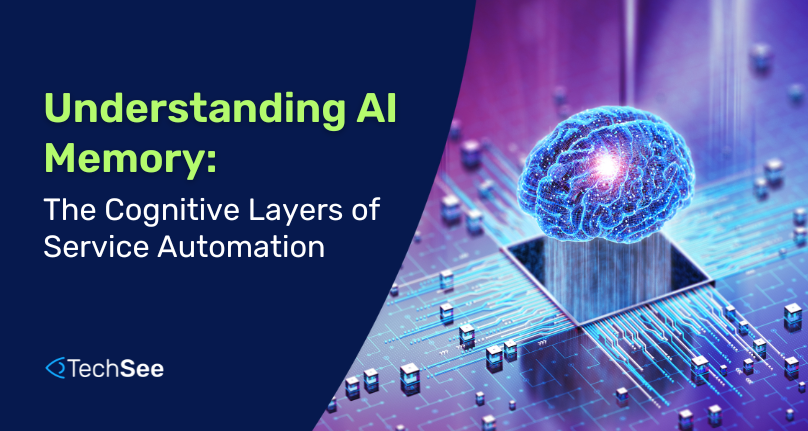Contents
Introduction
Artificial intelligence (AI) continues to evolve, becoming increasingly integral in various sectors, from automating customer service to picking stocks. One of the core technologies propelling this progression are advances in memory within AI systems. Robust AI systems employ different types of memory, each enhancing how these systems learn, remember, adapt and make decisions over time.
Parallels to Human Development
The development of AI memory systems has fascinating parallels to human developmental psychology, particularly in how we acquire and use knowledge over our lifetimes. Human memory develops through layered learning from basic language skills to complex decision-making. Consequently, the most advanced AI systems are designed to mimic this progression.
Early stages of AI memory development involve simple pattern recognition—similar to how children learn to recognize shapes and colors. Subsequent stages progressing to the more complex classifications and judgments present in adult cognitive processes. By understanding these parallels, we can better understand how AI memory systems emulate the efficiency and adaptability of human learning.
Types of Memory in AI
Semantic Memory
Semantic memory in AI mirrors its human counterpart—it involves the storage of factual information. AI systems use semantic memory to retain and recall facts and general knowledge from the training materials. For instance, a digital assistant uses semantic memory to retrieve product information from a user manual.
Episodic Memory
Episodic memory for AI relates to the ability to contextualize past interactions or experiences. This type of memory is critical to AI models in fields like customer service, as episodic memory can recall previous customer conversations to optimize for the best solution. Furthermore, episodic memory can recall previous conversations with an individual customer to offer personalized service, much like a salesperson remembers past encounters with clients. In the service and experience fields, episodic memory allows AI to capture the tribal knowledge needed to deliver effective automation.
Procedural Memory
Often understated, procedural memory involves the retention and recall of the steps required to complete tasks. In AI, procedural memory allows systems to perform automated functions they have learned through repetitive training. One common example would be operating machinery in a factory setting. In the context of service and customer experience, procedural memory enables AI to perform multi-step sequences, effectively addressing and resolving even complex customer needs.
Training AI Memory
Training Semantic Memory
Semantic memory in AI is trained using a large bank of structured data. This data is often sourced from technical manuals, support documentation and other product-related databases.
Training involves techniques such as supervised learning, where AI is fed specific questions paired with correct answers. Gradually this teaches the AI to generalize this information to new, unseen queries.
The training process ensures that the AI can recall factual and concise information quickly and accurately, essential for tasks requiring a deep understanding of established facts.
Training Episodic Memory
To train episodic memory, AI models are exposed to events or scenarios similar to those they will encounter in real-world applications. In service and CX, this will often include service transcripts.
Reinforcement learning and sequence modeling are commonly used here, allowing the AI to remember and contextualize personal interactions or otherwise learn from past experiences.
Through repeated exposure to various scenarios, the AI learns to detect patterns, anticipate future outcomes based on past interactions, and improve its decision-making processes over time.
Training Procedural Memory
Procedural memory training involves algorithms “practicing” specific tasks repetitively, often via simulation or through scripted sequences that mimic real-life processes.
Training is enhanced by methods like demonstration or imitation learning, where the AI observes examples of a task being performed. This is how it learns to replicate the actions in a consistent and efficient manner.
This type of memory is crucial for tasks requiring high accuracy and consistency, such as technical repairs, medical procedures and error troubleshooting.
TechSee’s Approach with Sophie AI
Integrating multiple types of memory significantly enhances AI accuracy and real-world resiliency. This multidimensional approach equips AI agents to respond with contextually appropriate reactions and solutions, while delivering true enterprise-grade accuracy.
TechSee’s Sophie AI synthesizes semantic memory for quick and accurate factual information recall, episodic memory for understanding customer interaction contexts and capturing tribal knowledge, and procedural memory for efficient problem resolution, optimizing interactions across customer service and technical support landscapes.
This combination ensures that every customer engagement is informed, on topic, and precise—mirroring the high-touch, personalized experience that builds customer loyalty and satisfaction.
Evolving Beyond Answers to Providing Solutions
Sophie AI builds on the foundational capabilities developed through diverse memory training, Sophie AI has progressed far from simply providing answers based on input data like a LLM-based chatbot. It offers the comprehensive, contextualized solutions only a true AI Agent can deliver.
This evolution involves integrating the trained memory systems beyond reacting to inputs but rather proactively anticipating needs and offering solutions. Through the convergence of semantic facts, episodic contextual knowledge, and procedural guidelines, Sophie AI can effectively support complex decision-making processes, thereby enhancing productivity and efficiency across various domains.
The advancements of memory in AI are not just technical achievements. They are stepping stones towards creating more intelligent, responsive, and understanding AI systems. Managing these diverse memory types introduces new challenges, such as ensuring they work harmoniously. We have made remarkable advances in this space as well, and look forward to sharing more in the future. As memory in AI continues to advance, the applications and capabilities of these systems will only broaden. They will begin approaching—and in some cases surpassing—human cognitive abilities.
For businesses looking to leverage AI technology to the fullest, correctly understanding and implementing the right AI memory solutions for a given task is crucial. To explore how your business can benefit from Sophie AI’s advanced AI solutions, contact a TechSee expert today.






